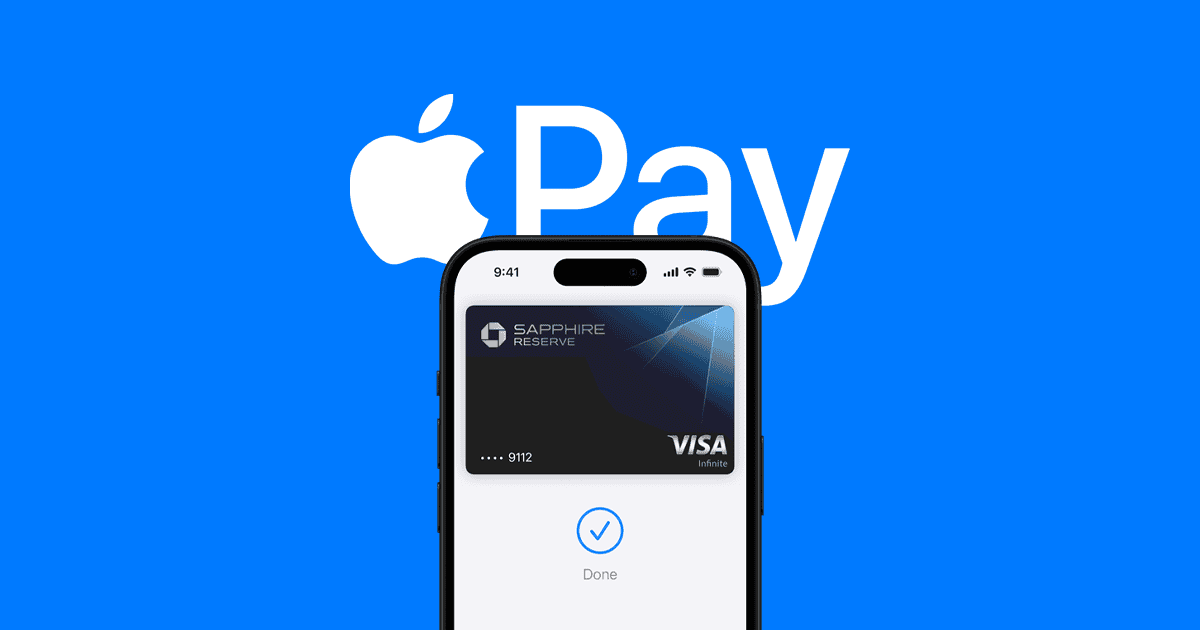Apple Pay offers a convenient way to make purchases using your iPhone, Apple Watch, or other Apple devices. Apple Pay is generally considered safe due to its use of encryption, tokenization, and biometric authentication. These security measures help protect your financial information from theft and fraud.
When you use Apple Pay, your actual card numbers are not stored on your device or Apple’s servers. Instead, a unique Device Account Number is assigned and encrypted. Each transaction uses a one-time dynamic security code, adding another layer of protection.
While Apple Pay provides strong security features, it’s still important to protect your device with a passcode and enable Find My iPhone. This helps prevent unauthorized access if your device is lost or stolen. Being aware of common scams and only using Apple Pay with trusted merchants can further enhance your security.
| Feature | Benefit |
|---|---|
| Encryption | Protects data |
| Tokenization | Hides card numbers |
| Biometric auth | Prevents unauthorized use |
| Dynamic codes | Secures transactions |
How Apple Pay Protects Your Information
Apple has designed Apple Pay with multiple layers of security to protect both your identity and your money:
- Tokenization
- Your actual credit or debit card number is never stored on your device or Apple’s servers.
- Instead, Apple Pay uses a unique “device account number” (token) for each card.
- Secure Enclave
- Sensitive payment data is stored in a special chip on your iPhone or Apple Watch called the Secure Enclave.
- This hardware-based security makes it extremely difficult for hackers to access.
- Biometric Authentication
- Payments require Face ID, Touch ID, or a passcode.
- Even if your phone is stolen, thieves can’t simply make payments without your biometric or PIN.
- Dynamic Transaction Codes
- Each transaction generates a unique, one-time cryptographic code.
- This prevents intercepted payment data from being reused in fraud attempts.
- Privacy by Design
- Apple does not track your purchases or store transaction details that can be tied back to you (source: SimplyMac).
⚠️ Potential Risks of Using Apple Pay
While Apple Pay is generally safer than swiping a physical card, no system is 100% risk-free. Here are some considerations:
- Lost or Stolen Devices
- If your iPhone or Apple Watch is not secured with a strong passcode or biometric lock, someone could attempt unauthorized payments.
- Phishing & Social Engineering
- Fraudsters may trick users into entering Apple ID credentials or card details on fake websites.
- Merchant Vulnerabilities
- While Apple Pay itself is secure, data breaches at retailers or banks can still affect your linked cards.
- Public Wi-Fi Risks
- Using Apple Pay over unsecured networks for online purchases could expose you to man-in-the-middle attacks.
✅ Best Practices for Safe Apple Pay Use
To maximize security when using Apple Pay:
- Keep your iPhone, iPad, or Apple Watch updated with the latest iOS/watchOS versions.
- Use Face ID or Touch ID instead of just a passcode.
- Enable Find My iPhone so you can remotely lock or erase your device if it’s lost.
- Only add cards through the official Wallet app—never through links or third-party prompts.
- Be cautious of phishing emails or texts asking for Apple ID or payment details.
- Monitor your bank and credit card statements regularly for unusual activity.
🏆 Final Verdict: Is Apple Pay Safe?
Yes—Apple Pay is one of the safest payment methods available in 2025. Its combination of tokenization, biometric authentication, and hardware-based encryption makes it more secure than traditional magnetic stripe or even chip-and-PIN cards (source: FrugalTesting).
That said, user habits matter. By keeping your device secure and staying alert to scams, you can use Apple Pay with confidence.
Apple Pay Security Features
Apple Pay incorporates multiple layers of protection to safeguard user data and transactions. These features work together to create a secure payment system that prioritizes user privacy.
Tokenization and Encryption
Apple Pay uses tokenization to replace your actual card number with a device-specific number. This unique code is stored securely on your device. When you make a purchase, the token is used instead of your real card details.
Encryption adds another layer of security. Your payment information is encrypted before it’s sent to merchants. This prevents unauthorized access to your data during transmission.
Key benefits of tokenization and encryption:
• Your actual card number is never shared
• Each transaction uses a unique code
• Data is protected even if intercepted
Secure Element Technology
The Secure Element is a dedicated chip in your Apple device that stores and protects your payment information. It’s isolated from the rest of the system for enhanced security.
This chip:
• Encrypts and stores your card data
• Generates dynamic security codes for transactions
• Is tamper-resistant to prevent physical attacks
The Secure Element works with Apple’s software to create a secure environment for processing payments. This hardware-based approach adds a strong layer of protection for your sensitive data.
Face ID and Touch ID Authentication
Apple Pay requires biometric authentication through Face ID or Touch ID before completing a transaction. This ensures that only you can authorize payments from your device.
Benefits of biometric authentication:
• Prevents unauthorized purchases
• Faster than entering a passcode
• More secure than traditional PIN codes
If your device doesn’t have Face ID or Touch ID, you’ll need to enter your passcode to confirm payments. This multi-factor approach adds an extra security step to the payment process.
Privacy Protections
Apple Pay is designed with privacy in mind. The system limits the amount of personal information shared during transactions.
Privacy features include:
• Apple doesn’t store your transaction history
• Merchants don’t see your card details
• Your purchases aren’t linked to your Apple ID
| Feature | Benefit |
|---|---|
| Limited data sharing | Reduces risk of data breaches |
| No transaction tracking | Protects your shopping habits |
| Separation from Apple ID | Keeps payments private from other services |
These privacy measures help protect your personal information and shopping habits from being accessed or misused by third parties.
Preventing Unauthorized Access
Apple Pay incorporates several security measures to protect your financial information. These features safeguard your account and prevent unauthorized transactions.
Lost Mode and ‘Find My iPhone’
If your device goes missing, you can quickly activate Lost Mode through the Find My app. This feature locks your device and disables Apple Pay. It prevents anyone from accessing your wallet or making purchases.
To use Lost Mode:
- Open Find My on another Apple device
- Select your lost device
- Choose “Mark As Lost”
- Follow the prompts to lock and track your device
Lost Mode also displays a custom message on the locked screen. You can include contact information for the device’s return.
Apple ID and Two-Factor Authentication
Your Apple ID is the key to your Apple Pay account. Two-factor authentication adds an extra layer of security. It requires a second form of verification when signing in or making changes to your account.
To set up two-factor authentication:
- Go to Settings > [Your Name] > Password & Security
- Tap “Turn On Two-Factor Authentication”
- Follow the setup steps
When enabled, you’ll need your password and a verification code to access your account. This code is sent to your trusted devices or phone number.
Two-factor authentication significantly reduces the risk of unauthorized access. Even if someone knows your password, they can’t log in without the second factor.
| Security Feature | Function |
|---|---|
| Lost Mode | Locks device and disables Apple Pay |
| Two-Factor Authentication | Requires second verification for account access |
User Privacy and Data Protection
Apple Pay prioritizes user privacy and data protection through robust security measures and transparent policies. Users can trust their sensitive information remains safeguarded during transactions.
Apple’s Privacy Policy
Apple’s privacy policy for Apple Pay emphasizes protecting personal information. The company doesn’t store or access your full card numbers. Instead, it assigns a unique Device Account Number to each card you add.
This number is encrypted and securely stored in the device’s Secure Element. Apple can’t see your purchases or link them to you. The policy also states that Apple won’t sell your data to third parties.
Table: Apple Pay Privacy Features
| Feature | Description |
|---|---|
| Device Account Number | Replaces actual card number |
| Secure Element | Encrypted chip stores payment data |
| Transaction Anonymity | Apple can’t see purchase details |
| No Data Selling | Your info isn’t sold to third parties |
Transaction Information Handling
Apple Pay handles transaction information with care to maintain user privacy. When you make a purchase, the merchant doesn’t receive your actual card details. Instead, they get a one-time payment token and your Device Account Number.
This process keeps your payment information anonymous. The system also doesn’t store your transaction history on Apple’s servers. Your purchase details stay on your device, giving you control over your data.
For added security, Apple Pay requires your device passcode, Face ID, or Touch ID to authorize transactions. This helps prevent unauthorized use if your device is lost or stolen.
Apple Pay Versus Traditional Payment Methods
Apple Pay offers a streamlined digital payment experience compared to physical cards. It combines security features with convenience for everyday transactions.
Benefits of Contactless Payments
Contactless payments like Apple Pay use NFC technology for quick transactions. You simply hold your device near a payment terminal to complete a purchase. This speeds up checkout times and reduces physical contact with payment surfaces.
Apple Pay encrypts your card information, adding a layer of security. Your actual card number isn’t stored on your device or shared with merchants. Instead, a unique token is used for each transaction.
Using Apple Pay can help you avoid card skimming. There’s no need to insert your card into potentially compromised readers. This protects your sensitive financial data from theft.
Digital Wallets and Physical Cards Comparison
| Feature | Apple Pay | Physical Cards |
|---|---|---|
| Speed | Fast tap-to-pay | Slower chip or swipe |
| Security | Tokenized data | Visible card numbers |
| Convenience | All cards in one device | Need to carry multiple cards |
| Acceptance | Growing, but not universal | Widely accepted |
Digital wallets like Apple Pay store multiple cards in one place. You can quickly switch between payment methods without carrying a bulky physical wallet. This convenience extends to online shopping, where Apple Pay can autofill payment details.
Physical cards still have wider acceptance. Not all merchants are equipped for contactless payments. Cards also work when your phone battery dies, which can be a backup option.
Apple Pay integrates with the Wallet app, allowing you to track spending and manage rewards. Traditional cards require separate apps or websites for account management.
Frequently Asked Questions
Apple Pay offers secure and convenient digital payments. Users often have questions about its safety features and advantages compared to other payment methods.
Is Apple Pay secure for transactions made over the internet?
Apple Pay provides strong security for online purchases. It uses encryption and tokenization to protect your card details. Websites never receive your actual card number. Instead, a unique token is used for each transaction.
What measures are in place to protect against unauthorized access when using Apple Pay?
Apple Pay requires biometric authentication like Face ID or Touch ID. You must confirm each payment with your fingerprint or face scan. This prevents others from using your device to make payments without your permission.
Can Apple Pay be trusted for receiving payments from unknown sources?
Apple Pay is generally safe for receiving money. However, exercise caution with unfamiliar senders. Verify the identity of anyone sending you funds. Be wary of potential scams involving unexpected payments.
What are the advantages and disadvantages of utilizing Apple Pay over other payment methods?
Advantages:
- Fast and convenient checkout
- Enhanced security features
- No need to carry physical cards
Disadvantages:
- Limited to Apple devices
- Not accepted everywhere
- Potential for impulse purchases
How does Apple Pay safeguard against fraudulent devices and skimmers?
Apple Pay uses a secure element chip to store payment info. This isolates sensitive data from the rest of your device. Tokenization also protects against skimmers by replacing card numbers with randomized tokens.
How does the security of Apple Pay compare with traditional credit card payments?
Apple Pay is generally more secure than physical cards. It eliminates the risk of card skimming. Your card number is never shared with merchants. Biometric authentication adds an extra layer of protection against unauthorized use.
| Feature | Apple Pay | Traditional Cards |
|---|---|---|
| Card number exposure | Never shared | Visible on card |
| Authentication | Biometric | Signature or PIN |
| Fraud protection | Built-in | Varies by issuer |
| Acceptance | Growing, but limited | Widely accepted |







